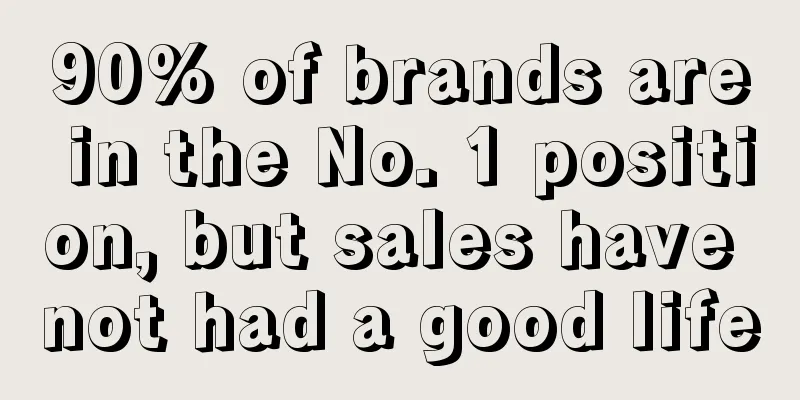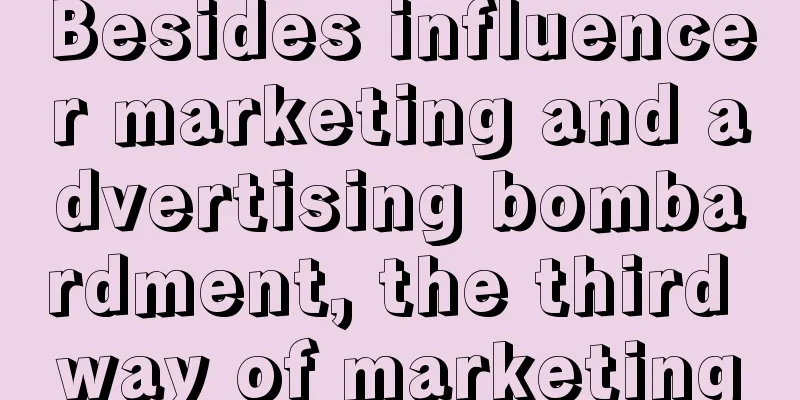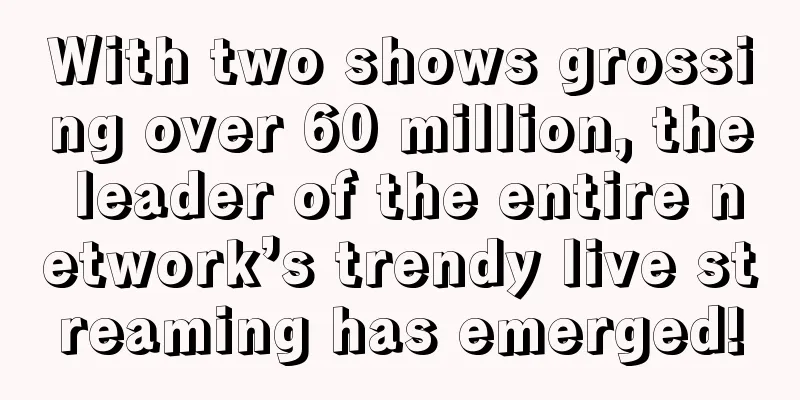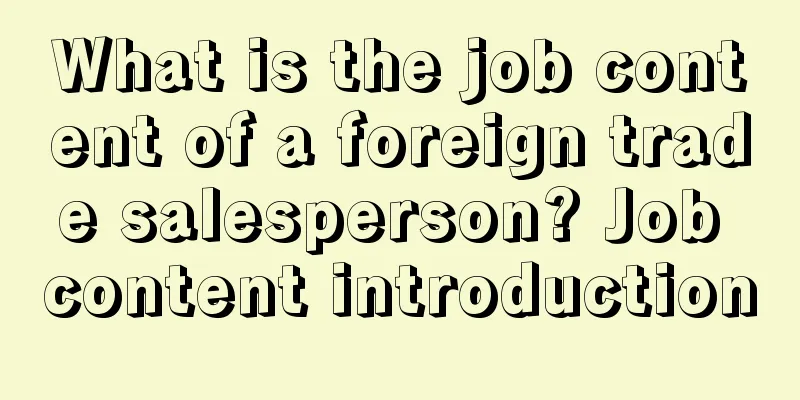90% of brands are in the No. 1 position, but sales have not had a good life

Although we repeatedly mention the value or importance of brands, as an organization, branding is not a goal, but a means of operation. Brand is a medium for communicating with users and an important tool for getting results. The 100-year visible history of the consumer market is the history of brands and even more so the history of operations. Brand is not equal to business, brand is part of business: Brand strategy should serve business strategy, brand rhythm should be consistent with business rhythm, and brand is part of business. The premise of understanding brand is to do brand from the perspective of business, not for the sake of brand. Brand that is separated from business is just the No. 1 brand enjoying itself. Brand is the key tool for business operations and the only tool for communicating with consumers and the market. Therefore, when we mention brand, we must add the path, strategy, and method of growth behind it. Brand cannot exist independently without the purpose of business operations. This is why we talked about "User-based 5A Brand Growth Method" in the previous article. First of all, the overall perspective. Brand is a tool for business, but not the whole of business. It also includes consumers, competitors, supply chains, channel partners, and the internal foundation of the enterprise. As the No. 1 brand, if you only focus on branding, no matter how good you do, you cannot go beyond the brand to look at the business. The overall view is to understand the role of the brand from the perspective of business, and then play the role that the brand should play, and even play a value beyond the brand to serve the business. Businesses are big or small, fast or slow, long or short, and have trends. 1. Business = Position x Rhythm x Strength x StrategyWhat is business! Business first of all occupies a relatively advantageous position. From the industry perspective, there are industry market price segments; from the category perspective, there are category differentiation and category characteristics; from the competition perspective, there are the first wave and the next wave. Sun Tzu's Art of War says: If you know the location of the battle and the day of the battle, you can fight a thousand miles away. Knowing where to start the war and choosing where to start the war are more important than the act of starting the war. In the battle for Shu-Han, Liu Bang occupied Hanzhong (occupied an advantageous position). Xiang Yu wanted to attack but could not break in, but Liu Bang could attack at any time, achieving the strategic effect of being able to conquer the world directly if he advanced or to stay in a corner if he retreated (occupied an advantageous position). Liu Bang could fail many times in specific battles because Hanzhong, as an advantageous position, could preserve his strength. If Xiang Yu failed once, he would suffer a strategic failure. After the decision was made to launch the Liaoshen Campaign, where should we start? There were disagreements and arguments. Chairman Mao later lamented that the battle in Jinfang was a big issue. Business = Position x Rhythm x Strength x Strategy Zeng Guofan's core strategic form was to build strongholds and fight stupid battles. In essence, it was to find an advantageous position and focus organizational resources to firmly occupy that advantageous position. For example, he dug deep trenches outside the Taiping Army's city to cut off its communication with the outside world. When the defenders in the city could no longer hold on, they would charge at the Hunan Army and turn from offense to defense. The allocation of troops and resources required for attack and defense is different. At this time, the effect of waiting for the enemy to tire out is achieved. The reason is that a favorable position is occupied by building a strong camp, and when the enemy can no longer endure it, the result of a stupid battle is achieved. This is even more true in business competition. The first element of business is to identify and occupy an advantageous position. For Yuanqi Forest, being the first 0-fat, sugar-free sparkling water is its advantageous position; for Santonban, being the first boutique instant coffee is its position; for Yili Group, becoming the leader in cheese sticks is its position; and for Miaofei, occupying the point of 0 sucrose in the competition with Yili Group is its position. For example, for Mixue Bingcheng, this location is the ultimate cost-effectiveness created by the scale advantage of 20,000 channel stores (low price itself is not a strategy, the low price strategy based on scale advantage is the strategy); for Heyanyuese, which is also a milk tea brand, guarding Changsha is more valuable than fighting Wuhan, and becoming the representative of Changsha culture is an excellent position for Heyanyuese. For another example, for Moutai, the national liquor is in that advantageous position, while the sauce-flavored liquor is not. Although we cannot say so, what consumers think is more important than anything else. For Dong-E E-Jiao, this position is the No. 1 brand for nourishing the body, not the No. 1 brand for replenishing blood. Business = position x rhythm x force x strategy. Moutai has only one label, which is "national liquor". Moutai's pursuit of "sauce aroma" is to lower its own value and to build momentum for Qinghualang, and it fell into the big pit dug by Qinghualang. If you are the boss, you must be yourself and don't play with others casually, especially not with the second. The second, you have to play with the boss with your face, and you have to play with the boss even if you are shameless. 2. RhythmThe overall view helps us find the advantageous position, and the stage theory helps us know where the rhythm is. If a person has a lofty ambition, he cannot achieve it without luck. This luck is actually the rhythm of doing things. In the words of ordinary people, it is the seven inches of the snake. Where is the "inch" of doing things? First of all, the stage theory is to find the rhythm in the stage. If the rhythm is right, you can get twice the result with half the effort. If the rhythm is wrong, you can get half the result with twice the effort. Four rhythms of brand development:
In the four stages of brand development, the brand No. 1 plays a connecting role, taking over the corporate strategy from above and breaking down the brand actions from below. The ability to understand, translate and break down is all about understanding the goals, clarifying the stages, grasping the key points, breaking down the actions and focusing resources.
A person who can pass the first stage to the final stage must have both ability and luck. Everyone has ability, but not everyone has luck. Sometimes luck is necessary, and you may even find that luck is the main factor in the end. If you can think this way, it means that you are becoming more and more mature. Do your best and leave the rest to fate. You only care about the hard work, not the harvest. 3. The Law of Military StrengthThere is a very noteworthy feature in the military training of the US military: never compete fairly with the opponent, never compete with you in an upright manner. They must be better than you, must have an advantage, that is, never compete with the opponent on the same level. Just as Chairman Mao's ten major military principles mainly talk about the superiority of military strength, two, three, four, five or even six times the enemy's military strength, to fight a war of annihilation. As Sun Tzu's Art of War says, more counts win, using the advantage of "more" to win is the principle of overwhelming military strength, which also means that great strength can bring miracles, and what exactly is the trump card?
4. StrategyFinally, in any business competition, before forming an overwhelming advantage, before achieving absolute advantage in action, form, and scale, the strategy should be modified and hidden - the art of war is all about deception. In fact, most of the No. 1 brands have not had a good life in sales. This is because most brands rarely make big moves in their brand life cycle, big moves that can make the world famous. If a brand has such a move, even once, it will bring 2-3 years of good days. This may be the goal we should strive for. The key point is to understand the business - business = position x rhythm x force x strategy. Strategy must be matched with force, the method of using force must be in line with rhythm, and rhythm must be placed in the overall perspective. Rhythm, force, and strategy, in the end, must serve and obey the advantageous position to be reached. Most of the No. 1s of brands do not have a good life for sales: they need to take fewer actions but at a larger scale, understand the overall situation, grasp the stage, focus on using troops, have effective strategies, encourage each other and work together with peers. Author: Houshan Guest House Source: WeChat official account: "New Consumer Brand Research Society (ID: PPD6977)" |
<<: Xiaohongshu Hot Article Secrets [April]
Recommend
Do I need to speak a foreign language to open a Shopee store? How to open a successful Shopee store?
Everyone thinks that you must know English to do c...
Do 3C products on Shopee need to be certified? How to upload products on Shopee?
We know that some e-commerce platforms require cer...
How to break down business indicators? Take membership as an example
After getting a business, how do you break down th...
What are the three Amazon ad bidding strategies? How to calculate?
Many friends on Amazon will also try to promote. A...
Should I choose individual or business for Amazon tax? How to get Amazon tax verification?
When selling on Amazon, sellers need to choose the...
Latest: WeChat Stores "Send Gifts" are on the rise, Taobao and Douyin have followed suit
WeChat's gift-giving function has officially b...
Are Shopee and Shopify the same? What is the difference?
Shopee has a strong background and is developing r...
After "de-Dong Yuhuiization", Dongfang Zhenxuan lives in the dilemma of "big anchor selling goods"
Why is Dongfang Zhenxuan still in the dilemma of b...
What products should a novice Amazon seller make? Which categories should he choose?
For new Amazon sellers, choosing the right product...
Can Shopify invest in traffic? What is Shopify's traffic diversion method?
There are still many merchants opening stores on t...
How seductive is “anthropomorphic” copywriting?
Anthropomorphic advertising copy is no longer unco...
Is it necessary to rent a warehouse for FBA? How to choose a warehouse?
We have opened a store on Amazon, and there are ma...
300,000+ notes, 68% gross profit margin, dismantling the business and brand logic behind Jellycat
This article breaks down Jellycat’s brand logic an...
How much is the salary of a foreign trade salesperson? What certificates are required?
Foreign trade salesmen are divided into two types:...
New brand, old problems
New consumer brands, what new phenomena will there...









